Home Energy Efficiency Equity Loan pilot: homeowner feedback survey - analysis of responses
Impartial analysis of the independent survey of homeowners who participated in the pilot. The analysis covers the impact that the measures implemented had on wellbeing and energy bills, the carbon reductions achieved and homeowner experience of the Equity Loan process and offer. Read the call for evidence: https://www.gov.scot/publications/equity-loan-scheme-call-evidence/pages/1/
2. Profile of respondents
Information about the profile of the 38 loan holders who took part in the survey is presented below. This includes details of the measures they installed, the size of their household, the age profile and employment status of people in their household.
Measures installed
Of the 38 respondents, 29 (76%) installed measures for energy efficiency purposes and 18 (47%) installed low emissions heating solutions (Figure 2.1).
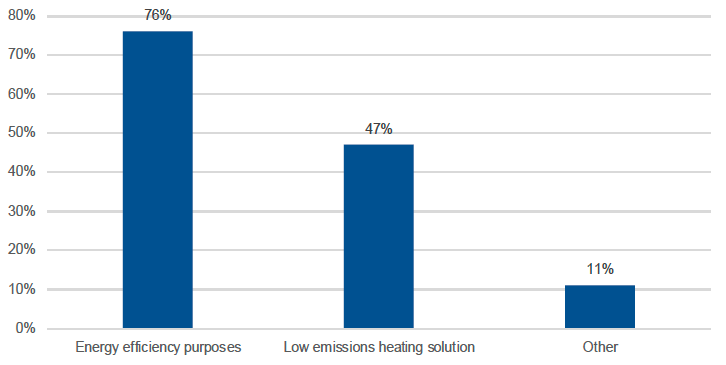
Nine (24%) installed both measures for energy efficiency purposes and low emissions heating solutions.
Low emissions heating solutions installed by loan holders included air source heat pumps and replacing old boilers with more efficient models. Of the 18 loan holders who installed heating solutions, most used systems based on fossil fuels (15, 83%) and three installed solutions that use renewable energy or zero carbon systems such as air source heat pumps (3, 17%) (Figure 2.2)[4].
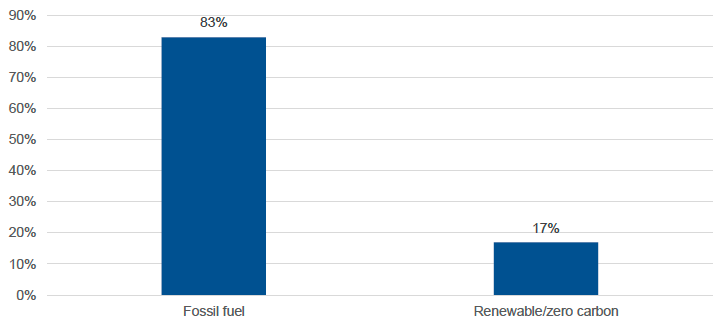
Energy efficiency measures funded included double glazed windows and doors; cavity wall insulation; repairs and replacements of roofs, chimneys, gutters, fascias and soffits; treatment for dry rot; and solar panels.
Four (11%) received other services such as re-wiring and re-decoration after flooding damage. All four of these loan holders also had a low emissions heating solution and/or energy efficiency measures installed.
Household composition
Size of household
At the time the works were carried out, a total of 79 people lived in the 38 loan holders' households, an average of 2.1 people per household. Figure 2.3 shows that the largest proportion of respondents lived with one other person (17, 45%), and 13 (34%) lived on their own. Smaller proportions lived in a household of three people (5, 13%), five people (2, 5%) and seven people (1, 3%).
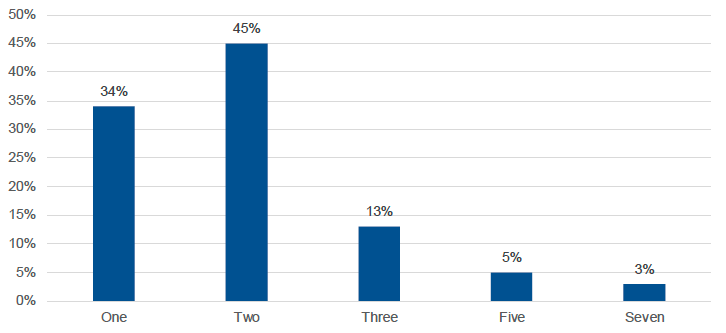
Age profile
The 38 respondents reported that, of the 79 people in their households, seven (9%) were aged under 15 years, 40 (51%) were 15-64 and 32 (41%) were 65 or over (Figure 2.4).
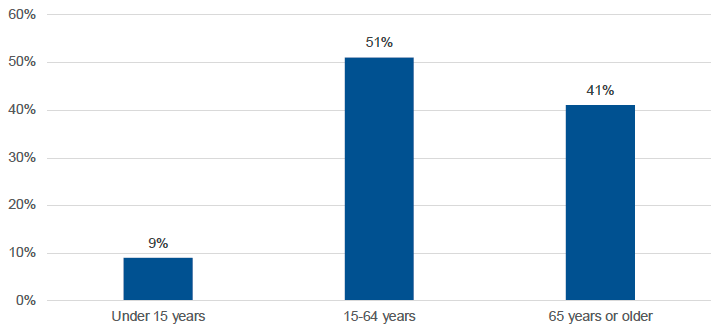
Employment status
Respondents provided details of the employment status of the 79 people in their households at the time the work was done. The largest proportion (30, 45%) were retired, and 21 (32%) were employed full time. Seven (11%) were employed part time, four (6%) were unable to work for medical reasons, three (5%) were unpaid carers for those who cannot work on medical grounds, and one (2%) was unemployed (Figure 2.5).
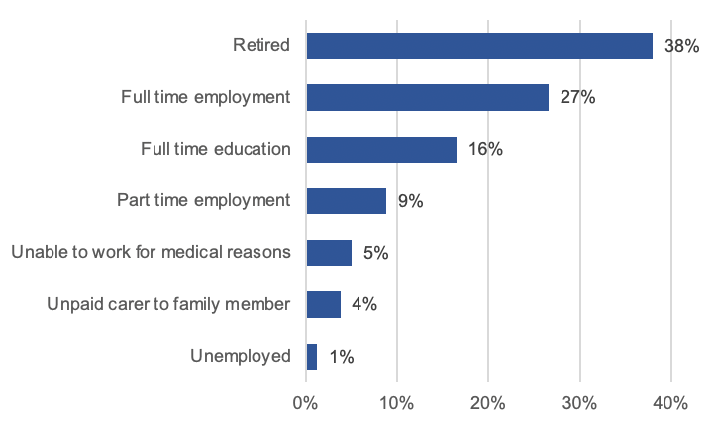
Local authority area
Respondents represented seven of the eight local authority areas that took part in the pilot (Figure 2.6). Perth & Kinross (14, 37%) accounted for the largest proportion followed by Glasgow and Argyll & Bute (both 8, 21%).
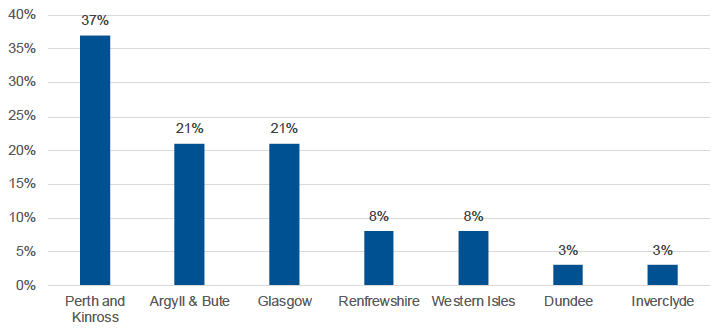
Contact
There is a problem
Thanks for your feedback